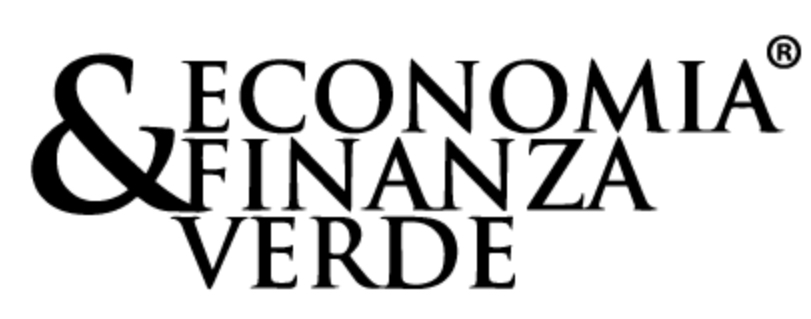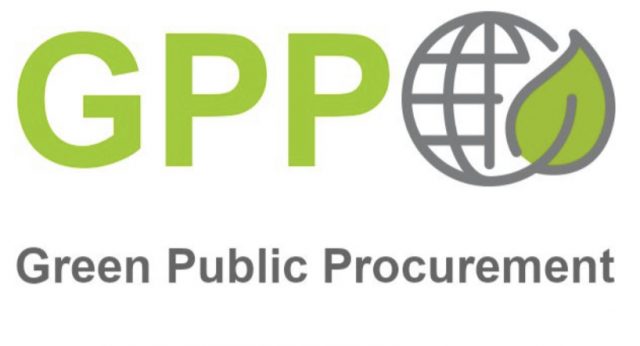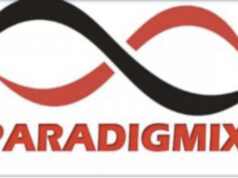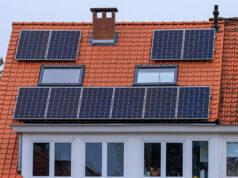Questo articolo inedito di approfondimento del nostro collaboratore avvocato Marco Mariani mostra come la complessità di certi temi richieda adeguate argomentazioni per la maggiore consapevolezza di tutti. Il rischio da evitare è la banalizzazione dei problemi o l’abuso di espressioni nella questione della sostenibilità ambientale.
Qui si affronta criticamente il tema dell’approvvigionamento di beni e servizi da parte delle Autorità pubbliche, auspicando l’integrazione degli obiettivi ambientali in tutte le fasi della contrattazione pubblica.
E’ un excursus non solo normativo, ma anche socio-economico sui fondamenti teorici e sui vantaggi pratici di tale azione, introdotta dalla regolamentazione europea.
La integrazione tra sostenibilità ambientale e disciplina degli appalti pubblici viene anche ricondotta al recente recepimento nella Costituzione italiana della Tutela dell’Ambiente, sul quale su questa piattaforma si può leggere anche l’articolo di Andrea Miccinilli.
Buon approfondimento!
————
The Green public procurement in the perspective of a sustainable development
Introduction
The 2030 Agenda for Sustainable Development is an action programme for people, planet and prosperity. Signed on 25 September 2015 by the governments of the 193 member countries of the United Nations, and approved by the UN General Assembly, the Agenda consists of 17 Sustainable Development Goals (SDGs) framed within a broader programme of action consisting of 169 associated targets to be achieved in the environmental, economic, social and institutional spheres by 2030.
This programme does not solve all problems, but represents a good common basis from which to build a different world and give everyone the chance to live in an environmentally, socially and economically sustainable world.
The goals set for sustainable development have a global validity, they concern and involve all countries and components of society, from private companies to the public sector, from civil society to information and cultural operators.
The 17 Goals refer to a set of important development issues that take into account the three dimensions of sustainable development – economic, social and ecological – in a balanced manner and aim to end poverty, fight inequality, tackle climate change and build peaceful societies that respect human rights.
In particular, Goal 9 (‘Build resilient infrastructure, promote inclusive and sustainable industrialisation and foster innovation’) emphasises that investments in sustainable infrastructureand scientific and technological research increase economic growth, create jobs and promote prosperity. Infrastructure projects costing billions are planned over the next 15 years, particularly in developing countries and emerging economies. Goal 9 therefore aims to build resilient infrastructure, promote industrialisation and foster innovation.
Greater resource efficiency and increased adoption of clean, environmentally friendly technologies and industrial processes are needed to make infrastructure and industries sustainable by 2030. Goal 9 aims to support technology development, research and innovation especially in developing countries, provide small industries and companies with greater access to affordable credit and financial services, and increase the integration of these companies into markets. It also aims to support universal and affordable access to the internet in the world’s least developed countries.
Public procurement and the environment: a reality check
Crossing public procurement and contract law with the environment or sustainable development is a fruitful exercise from an intellectual point of view. It inevitably raises many practical and theoretical questions that are either unsolvable or give rise to controversial answers. Taking into consideration policies and normative frameworks relating to different objects (here, for example, environmental law, public procurement law) with a very significant technical component, drawn up by different levels of authority (international, European, national, regional and local), by specialists in each discipline, entails a degree of complexity that constitutes a challenge for any legislator, judge or practitioner, despite the multiplication of explanations disseminated. It is hardly surprising, therefore, that problems not solved upstream find answers downstream, by chance in litigation. The adjustment of normative texts and political positions makes the practice of law delicate.
A pessimistic discourse emphasises the legal insecurity and relativity that are becoming permanent, undermining the idea of a norm and the idea of the rule of law when the public authorities are the recipients of the rules. An optimistic discourse emphasises the opportunities created by the context of uncertainty, a factor of creativity, of the emergence of numerous normative and explanatory initiatives that are more open, with the ambition of disseminating good practices or at least reporting on what is being done within the existing legal framework.
The scope of this work is to move away from pessimistic and optimistic discourses and to emphasise that European law on public procurement and contracts is neither an obstacle nor an opportunity to support the environment and sustainable development. The legal framework is complex for any procurement and investment process. It is hardly relevant to collocate discipline or economic considerations against environmental considerations in the field under study.
The economic discourse
The doctrinal reflection is in line with an observation: the worldwide progression of regulations relating to public contracts in a “free trade” perspective. Not hesitating to evoke a global revolution, how could national imperatives be harmonised with the objectives usually pursued by the conclusion of international agreements? It’s normal to consider that the approaches are significantly different in national laws and in agreements relating to trade between countries or in the context of projects with an international dimension, in particular on the question of the so-called instrumental or functional functions of public procurement.
These are well known in the economic discipline. The first function of public procurement is, according to the Keynesian doctrine of fiscal policy, to support aggregate demand in order to stimulate economic activity in times of recession. The second function of public procurement is to protect domestic industries from foreign competition. The third function of public procurement is to improve the competitiveness of certain industrial sectors. Finally, the fourth function of public procurement is to address regional disparities, redistributing resources in some way.
These functions can be related to the reasons put forward by economists to justify public interventionism, the theory of externalities, the theory of market failure or value-based interventionism in the context of the redistributive function of the state.
It is therefore easy to understand that public procurement, and the law that applies to it, is a politicalkey issue. The subject is sensitive in the context of the development of national standards and in the context of the conclusion of international agreements, as the two perspectives, national and international, necessarily influence each other. Although globalisation, particularly of economic exchanges, is prevalent in economic, political and media discourse at the beginning of the third millennium, it must be noted that public procurement is subject to regulations that are significantly nuanced from the perspective of the preservation of instrumental functions in the international order. The links between economic theory and the public market are not limited to the free trade perspective. The theory of auctions, more directly devoted to the different procedures of acquisition (or sale) of goods and services, must still be considered. It introduces the reader to a new level of complexity while allowing a glimpse of the limits of the free-trade perspective in the context of a purchasing process: discrimination (to discriminate means to choose) seems to be cosubstantial to the processes of competition. This common sense observation, formalised in economic theory, implies, if not a reversal of the free-trade perspective, at least significant nuances.
The globalisation of the economy, which is contributing to the development of regulations and international agreements on public procurement, is also accompanied by a renewed interest in the possibilities of using public procurement as an instrument of industrial, social or environmental policy (sometimes described as secondary policies). The possibility for states to use public procurement as an instrument of industrial policy can be preserved, framed or prohibited by regional and international agreements and treaties. In terms of procurement techniques, the various ways of conducting industrial policy are well known. They are highly controversial, although economic theory can explain the basis for them. The ideological disagreement is fuelled by methodological difficulties: it seems difficult to measure the concrete effects of policies. These difficulties allow some to criticise the appropriateness of these policies and others to justify them.
The concern to protect domestic industries from imports. The most radical measure is to exclude foreign companies or products from contracts awarded by the state and its branches. Since the Great Depression, the United States has used this type of direct support for American companies, sometimes with an accentuation of the phenomenon in certain so-called strategic or symbolic sectors such as defence or space research.
This support takes many forms: a variable proportion of domestic products are required, an advantage is given to domestic companies or products in terms of price, etc. These policies are sometimes, but not necessarily, enshrined in legislation. They can also be conducted by public entities in their purchasing policy. In the latter case, they will be included in the specifications. Clauses excluding the participation of certain companies or reserving contracts for certain companies (whose nationality is often defined by ownership), technical prescriptions oriented towards a particular product, tailor-made specifications, use of designations of origin or national standardisation or certification systems, such are the techniques used to protect national industries. From the perspective of economic theory, these policies are sometimes justified by the desire to encourage firms in certain domestic sectors that do not have a comparative advantage over foreign firms in the same sector.
They are therefore likely to be dishomogeneous with the objectives pursued by the conclusion of free trade agreements at regional or international level, based on the theory of comparative advantage in trade between states.
From a more pragmatic point of view, the effectiveness of these policies is questionable, particularly because discriminatory policies do not necessarily influence specialisation at the international level, as they constitute only very imperfect barriers to entry. Indeed, the importance of private versus public demand for the same good or service must be considered in the problem. Depending on this relationship, it may happen that the prices paid by public authorities are higher than those paid by private individuals for the same good or service. A discussion between economists is taking place to measure more concretely the perverse effects of these measures, based on the analysis parameters described above. A precise and consensual quantification seems delicate.
Policies that tend to correct market imperfections. The reality did not reflect the theoretical model of perfect markets or perfect competition. However, the starting point of economic theory in international trade and its concept of comparative advantage assumes perfect markets. Public procurement can therefore also be used to correct for imperfections in reality. The techniques for doing so are similar to the methods described above for protecting national industries or production. In addition, the known procedures may result, on the one hand, from simple investment programmes decided by the competent authorities of the country in question and, on the other hand, from the particular conditions linked to the execution of the contract.
In concrete terms, this will sometimes mean concluding public contracts with national companies that are indirectly supported by the execution of these contracts, and sometimes concluding public contracts with foreign companies by requiring them to use national subcontractors for all or part of the execution of the contract. Policies to support small and medium-sized enterprises have the same basis in economic theory, as does support for enterprises that are owned or composed mainly of an identified social group (disadvantaged workers, targeted ethnic group, gender of the owner).
Policies that tend to create comparative advantage in imperfect markets.
As discussed above, barriers to entry may exist in some imperfect markets. Public procurement (and state aid) can be used to combat these imperfections. The European AIRBUS project can also be seen as a political will to organise competition to the American company Boeing. Even if the terms of the support from France, Germany, the UK and Spain are more of a subsidy idea, they could have taken the form of a development contract or particularly government-supported orders for AIRBUS aircraft or technologies.
In imperfect markets, firms react to information, possibly by lowering what would have been their price in a perfect market. The techniques of penalising firms or products in a public procurement process through fictitious mark-ups in the comparison of bids are sometimes criticised.
Indeed, in imperfect markets, it is foreseeable that the targeted competitors will react to this information by adapting their prices or their strategies. They will be tempted to lower their prices in such a way that they still have a chance of obtaining the contracts. It is therefore important for a contracting authority not to use the price criterion alone and not to disclose the value of the penalties.
Some discrimination policies are also justified by the fact that in certain circumstances, according to economic theory, it is preferable that it be the number of firms likely to perform the contract is reduced. The temptation is then to eliminate firms that have looser links with the state or the purchasing public authority, either because they do not employ staff on its territory or because they are not owned by indigenous people.
Government procurement are a negotiating tool in trade negotiations: International negotiations are sometimes like bargaining over the degree of openness of government procurement. The WTO Marrakech Agreement on Government Procurement is a good example of this negotiating spirit, which is often attributed to US officials. The Iraqi conflict is another example of bargaining, as reconstruction contracts have eluded companies from countries that did not join the axis of evil fighters.
Concerning policies driven by ‘non-economic’ objectives, some may claim the possibility of pursuing ‘non-economic’ objectives in public procurement. The term ‘non-economic’ objectives in the context of the issue under consideration is inherently ambiguous. Indeed, no human activity seems to be able to escape an economic type of reflection: a marriage is also a place of exchange, some of which have strictly material aspects and counterparts; a company can carry out actions with a goal that goes beyond the realisation of short-term profits and whose ultimate justification will reside in the ethics of the management without undermining the economic character of its activity. Beyond this example, the European Commission, when it mentions economic considerations, often limits itself to considering an exchange. However, the economy is not limited to exchanges. It tends to manage scarce resources in a necessarily broader perspective. When they are identified as such, the objectives considered as not being purely economic are often in the form of examples, without justification in relation to economic theory. They often overlap with what has been discussed above as industrial policy objectives: the promotion and support of certain groups in a population for social or ethnic reasons, certain regions of a country in economic decline, certain sectors of the economy, national security, etc. Such policies are sometimes criticised for being too narrowly focused on the economic dimension of the problem. Such policies are sometimes criticised because of the failures of the state in their implementation: lack of information and judgement, failure to make decisions due to lobbying, difficulty in identifying industries with a comparative advantage. The discussion then shifts to the choice of the appropriate legal instrument or policy: direct aid, taxation, price controls, etc.
The first example of non-economic considerations is social considerations. The pursuit of social policies in public procurement is a hotly debated issue in Europe. Public procurement can be a tool to support the development of disadvantaged groups, to redress historical inequalities that a society intends to overcome at some point in its evolution, or generally to promote social harmony. The United States has a long history of such policies, and the intervention of the US Supreme Court in 1995 in Adarand Constructors v. Pena did not undermine the principle of such positive action, but imposed a stricter assessment of it. The ways of supporting such objectives vary: action on companies allowed to participate in procurement procedures in terms of qualification or selection criteria, market reservations, sanctions on future participation in case of non-compliance with certain rules, targeted subcontracting made compulsory, obligations to hire a target group such as the long-term unemployed, preferential techniques in the evaluation of tenders, obligations to train target persons during the execution of the contract, organisation of an operation in the form of tailor-made contracts that allow direct participation of target companies, control of social policies applied by companies participating in contracts with regard to or beyond the obligations contained in the social regulations. These examples do not claim to be exhaustive. There is a lively debate about the cost of these policies, the possibilities for effective monitoring and enforcement and their overall effect on the economy.
A second example of non-economic considerations is environmental considerations. It has been argued that environmental considerations can be included in public procurement in two main ways: either in direct connection with the contract, or as a separate consideration. The first method allows, for example, the purchase of environmentally friendly products or products meeting certain environmental performance requirements. The second method involves the pursuit of broader objectives, supporting environmentally friendly behaviour by a company in general, and therefore not necessarily related to the subject of the contract. However, this distinction remains formal insofar as the support of environmentally friendly behaviour occurs in the performance of economic activities. Therefore, it is always related to a production, distribution and service activity that forms the subject matter of the contract, at least if one considers the context. The general environmental behaviour of the company will have an impact on its prices and product range. The distinction is no doubt related to the recurrent discussion in economics about the choice of means for government intervention. Here, the distinction is intended to promote the adoption of general regulations for economic activities rather than to allow specific purchasing policies to develop. In doing so, however, the distinction prevents responsible purchasing behaviour, perhaps facilitates lobbying that may focus on the level of government competent to adopt the regulation in question and, finally, has considerably limited the competence of EU Member States. The formulation of requirements relating to production, distribution, marketing methods or environmental performance throughout the life cycle of a product can be included in technical requirements in a special specification. Support for environmental policies can also take the form of selection or participation criteria and contract award criteria (either through specific criteria or through price weighting in a scoring system linked to environmental considerations). Environmental considerations meet what economists call externalities (positive or negative).
Despite this theoretical framework excluding any dogmatism, the possibility of integrating environmental considerations into public procurement and contracts has been the subject of much controversy in European and Belgian law. However, public and private actors have not dwelt on these debates in order to make concrete progress with the uncertainties of the existing legal framework. And rightly so, in our view, since there are no specific obstacles in the law of public procurement and contracts, the complexity of which is inherent in European law.
Environment and sustainable development in European public procurement law
The environment and sustainable development have finally been given a place in European public procurement law . Sustainable development allows for specific measures which are not exclusively provided for in the public procurement directives. Environmental considerations can be integrated both at the stage of selecting companies and at the stage of awarding the contract. The Directives intend to clarify how contracting authorities can contribute to the protection of the environment and the promotion of sustainable development “while ensuring that they obtain the best value for money for their contracts”.
This is a step forward.
In contrast, European law at the beginning has remained much more ambiguous on social considerations.
However, this recognition must be reasonably understood. Other objectives are pursued by European law. The preambles to both directives recall that public procurement in the Member States must respect the principles of the EC Treaty. The principles of free movement of goods, freedom of establishment and freedom to provide services, as well as the principles derived from these, such as equal treatment, non-discrimination, mutual recognition, proportionality and transparency. These particular provisions and other rules of the EC Treaty must influence the interpretation of the specific co-ordination provisions in the Directives. The coordination achieved by the two Directives does not, however, bring about a complete harmonisation of national laws.
It should also be remembered that European public procurement law is part of a competition logic, or at least of a certain idea of competition, which is a real Trojan horse, likely to threaten any overly original initiatives.
The way in which contracting authorities design and implement procurement procedures must incorporate the requirement for some competition: to have more than one economic operator compete in the procurement process . In the economic discipline, the theory of auctions gives early but limited guidance on how to organise this competition in the most efficient way.
A more fundamental injunction is addressed to Member States: they should ensure that the participation of a body governed by public law in a public procurement procedure does not distort competition vis-à-vis private bidders. The translation of the injunction into the provisions of the Directives is cryptic: “Contracting authorities shall treat economic operators66 equally, in a non-discriminatory manner and act transparently “.
This is in line with the “Teckal” judgment. In our view, the solutions lie in incorporating into procurement techniques rules that aim to compensate for the various advantages granted to certain structures. In other words, they imply the integration of a new degree of complexity in the awarding techniques, in order not to penalise anyone, without which equality is only formal to the point of becoming destructive. The notion of compensatory inequality is linked to this issue. The laconic style of the guidelines is regrettable, however, even if it is obvious that there could not be a political consensus on the subject. From a theoretical point of view, the same may be true for environmental concerns: how can we organise a competitive tendering process that respects equality between economic operators when not all of them are committed to these issues in the same way? Once again, this question is not specific to the issue of environmental promotion; it arises in identical terms and tensions for all innovative services or supplies.
The Green public procurement as an environmental policy tool
The GPP (Green Public Procurement or Sustainable Public Procurement) is defined by the European Commission as “[…] the approach whereby public authorities integrate environmental criteria into all phases of the purchasing process, encouraging the dissemination of environmental technologies and the development of environmentally sound products, through research and the choice of results and solutions that have the least possible impact on the environment throughout their entire life cycle”.
This is an environmental policy instrument that aims to encourage the development of a market for products and services with a reduced environmental impact through the leverage of public demand.
With a Ministerial Decree of 11 April 2008 (pdf 78.1 kb) (G.U. n. 107 of 8/5/2008), in agreement with the Ministers of Economy and Finance and Economic Development, the Minister of the Environment and Protection of Land and Sea adopted the “Action Plan for Sustainable Consumption in the Public Administration Sector (PAN GPP) 2008″ (pdf 222 kb).
The new 2013 Action Plan updated by Ministerial Decree of 10 April 2013 (G.U. no. 102 of 3/5/2013) provides for:
– A “Management Committee”, for the implementation of the Action Plan on the environmental sustainability of consumption in the P.A. sector and for the development of the national strategy on integrated product policy;
– Definition of Minimum Environmental Criteria (CAM) within special working groups organised by the Ministry of the Environment (as coordinator of the Management Committee) and set up by MATTM;
– The ‘Permanent Comparison Table’, where the MATTM and CONSIP meet with regional purchasing centres on CAMs prior to their adoption and before examining any criticalities encountered during their application;
– Consultation tables with trade associations, specific to each product category indicated in the Plan, and environmental agencies (ISPRA, ARPA, APPA);
– Monitoring by the Authority for the Supervision of Public Contracts to verify the degree of CAM application and effectiveness.
The ‘Minimum Environmental Criteria’ (CAM) represent the reference point at national level for green public procurement and can be used by contracting authorities to enable the Green Public Procurement Action Plan to maximise environmental and economic benefits. The integration of environmental aspects into purchasing processes is based on an overall view of the whole life cycle, Life Cycle Cost (LCC), of a good/service/work, thus allowing not only the aspects attributable to design, production, use and disposal (whole life cycle) to be taken into account, but also the actual costs to the community.
The Life Cycle Approach (LCC) also emerges from the European Integrated Product Policy (IPP) strategy, which has as its basic documents the Green Paper (pdf 226 kb), the Commission Communication on IPP mentioned above and the new Public Procurement Directive, DIRECTIVE 2014/24/EU (pdf 2.48 MB) (entered into force on 17/4/2014), which determined the obligation, within 24 months, to update the Procurement Code with a greater green orientation.
Reading it the first time of the EU directives No. 2014/24/EU on public procurement and No. 2014/23/EU on the award of concession contracts, and of some specific provisions, characteristic elements emerge that attest to an evolution towards environmental (and social) sustainability of the public procurement discipline, although it will of course be necessary to wait for the legislative acts transposing the directives into our national legal system, which must be issued by April 2016.
First of all, it becomes clear that the use of the economically most advantageous tender becomes preferential for the awarding of public contracts and, consequently, social (and environmental) aspects become priority aspects from a qualitative point of view.
The economically most advantageous tender is described in terms of ‘best value for money’ as a different price/quality approach compared to the current directives (of 2004 and transposed by Legislative Decree 163/2006) based on price or cost, following a cost-effectiveness approach such as Life Cycle Cost
Law 221 of 28 December 2015 (Green Economy) establishes the obligation to use CAM for Energy Services for Buildings, Electrical and Electronic Office Equipment, HID lamps and LED systems, luminaires and public lighting systems. It also foresees the application of CAM for at least 50 per cent of the value of supplies, works or services subject to tenders for the categories ‘Copy and graphic paper’, ‘Catering and food’, ‘Cleaning and hygiene products’, ‘Textiles’ and ‘Office furniture’.
The new Procurement Code, Legislative Decree No. 50 of 18 April 2016, integrated all the novelties introduced by Law 221/15.
The Environment in the Italian Constitution
On 8 February 2022, the Italian Parliament finally approved a bill to include environmental protection among the fundamental principles of the Constitution.
Constitutional Law No. 1 of 2022, approved by a two-thirds majority of its components, intervenes on Articles 9 and 41 of the Constitution to introduce environmental protection into their provisions.
The text introduces a new paragraph to Article 9 of the Constitution in order to recognise – within the fundamental principles set out in the Constitution – the principle of protecting the environment, biodiversity and ecosystems, also in the interest of future generations. Alongside the protection of the landscape and historical-artistic heritage of the Nation, referred to in the second paragraph of Article 9 of the Constitution, the protection of these aspects is also assigned to the Republic.
A principle of animal protection is also included, through the provision of a reserve of state law regulating the forms and methods.
At the same time, Article 41 of the Constitution on the exercise of economic initiative is amended. Firstly, the second paragraph is amended by establishing that private economic initiative may not be carried out to the detriment of health and the environment, adding these two limits to those already in force, namely security, freedom and human dignity. The second amendment affects, in turn, the third paragraph of Article 41, reserving to the law the possibility of directing and coordinating economic activity, public and private, for purposes that are not only social but also environmental.
Finally, the text contains a safeguard clause for the application of the principle of animal protection, as introduced by the draft constitutional law, to special statute regions and the autonomous provinces of Trento and Bolzano.
The Chamber of Deputies approved the text, in first deliberation, on 12 October 2021, in the same text as the Senate, which approved it in second deliberation on 3 November 2021, with a two-thirds majority of its members. Finally, the House finally approved the bill, also with a two-thirds majority, on 8 February 2022.
The purpose of the amendment, on the basis of what was highlighted in the course of the parliamentary work, is first of all to give articulation to the principle of environmental protection, which goes beyond the mention of the ‘protection of the environment, the ecosystem and the cultural heritage’ provided for in Article 117, second paragraph of the Constitution – introduced with the reform of Title V approved in 2001 – in the part where it enumerates the matters over which the State has exclusive legislative competence.
In addition to the environment, the protection of biodiversity and ecosystems is attributed to the Republic. In this context, a reference is introduced to the ‘interest of future generations’, anexpression used for the first time in the constitutional text.
The environment is understood here in its broadest and most systemic sense: as environment, ecosystem, biodiversity.
The wording develops protection guidelines affirmed by the Constitutional Court in an interpretative manner, expressed on the basis of existing constitutional provisions.
The protection of ecosystems refers to the legislative competence of the State, as per letter s) of the second paragraph of Article 117.
In particular, the protection of the ‘landscape’ constitutionally enshrined in Article 9 has been declined by constitutional jurisprudence as landscape-environmental protection with an ‘expansive’ reading.
In this perspective, the environment is configured not as a mere asset or competency matter but as a primary and systemic value.
The Court also referred (in Judgment No. 179 of 2019) to an “evolutionary process aimed at recognising a new relationship between the territorial community and the environment surrounding it, within which the awareness of the soil [this was what it was about, in that judgment, ed.] as a non-renewable eco-systemic natural resource, essential for the purposes of environmental balance, capable of expressing a social function and incorporating a plurality of interests and collective utilities, also of an intergenerational nature, has been consolidated”. “In this perspective, the care of the landscape concerns the entire territory, even when degraded or apparently devoid of value,” adds Judgment No. 71 of 2020 – which also emphasises that “landscape-environmental protection is no longer a discipline confined to the national sphere”, especially in view of the European Landscape Convention (adopted in Strasbourg by the Committee of Ministers of the Council of Europe on 19 July 2000 and ratified by Law No. 14 of 2006), according to which “the concept of protection indissolubly links the management of the territory to the contribution of the populations” (hence “the passage from a merely conservative protection to the need to enhance the public and local community interests with articulated interventions”, among which, in that case, the acquisition and recovery of degraded land).
On this interpretative evolution of protection, from landscape (hence morphological, visual, cultural) to environmental (constitutive, value, community), the reform of Title V, modifying Article 117, second paragraph of the Constitution, also intervened.
In this context, the ‘protection’ of the environment and the ecosystem was introduced among the subjects reserved to the exclusive legislative power of the State (with the ‘valorisation’ of environmental assets instead being attributed to the concurrent power of the Regions).
The Court had occasion to reiterate in this regard (in Judgment no. 407 of 2002) how “legislative evolution and constitutional jurisprudence lead to the exclusion of the possibility of identifying a ‘matter’ in the technical sense, qualifiable as ‘protection of the environment’, since it does not appear to be configurable as a sphere of State competence strictly circumscribed and delimited, since, on the contrary, it inextricably invests and intertwines with other interests and competences”. Hence “a configuration of the environment as a constitutionally protected ‘value’, which, as such, delineates a sort of ‘transversal‘ subject matter, with regard to which different competences are applied, which may well be regional, the State being responsible for determinations that respond to needs deserving of uniform regulation throughout the national territory”.
The environment as a constitutionally protected value (and as a complex organic entity: sentence no. 378 of 2007) emerges from an exclusively ‘anthropocentric’ view. In the wording of Article 117(2)(s), environment and ecosystem are not resolved into an endiad, since, “the former term is intended, above all, to refer to that which concerns the habitat of human beings, while the latter refers to that which concerns the conservation of nature as a value in itself” (Judgment No. 12 of 2009).
The Green public procurement in the enabling act on public contracts
The reform of the Procurement Code, under discussion now and scheduled for January 2023, will be strategic for the purposes of the PNRR and, also for this reason, sets several objectives to ensure the eco-sustainability of projects and to relaunch green investments, according to Green Public Procurement (GPP) strategies.
Public procurement will play a strategic role in pursuing the environmental objectives of the PNRR, which also for this purpose has set tight deadlines for the upcoming reform of the Procurement Code, namely: entry into force of the enabling act by June 2022, and of the delegated legislative decree by March 2023.
Among the objectives set out in the enabling act approved by Parliament for the new Public Contracts Code (Law no. 78 of 21 June 2022), there are therefore several aimed at fostering Green Public Procurement (GPP) strategies
The first one is to simplify procedures aimed at the realisation of investments in green and digital technologies, as well as in innovation and research, also in order to achieve the goals of the UN 2030 Agenda for Sustainable Development;
Secondly, to introduce reporting systems for energy-environmental objectives, as well as a transitional period with a reasonable timeframe for the application of the new CAMs, both of which are very important to ensure a gradual, but finally effective and homogeneous application of the aforementioned criteria
Thirdly, to respect energy and environmental responsibility criteria in public contracts and concessions, in particular by defining minimum environmental criteria to be respected in awarding procedures and in the execution of contracts (reference is made to the approval by the MATTM of new ‘CAMs’, which contracting stations are already required to apply under the current Procurement Code)
Finally, to increase the degree of eco-sustainability of public investments and economic activities according to the criteria of Regulation (EU) 2020/852, which regulates precisely how to determine the eco-sustainability of an economic activity, which is fundamental for respecting the principle of Do No Significant Harm (DNSH);
It is hoped, therefore, that the long-awaited reorganisation of public contract regulations will also provide an opportunity for an increase in green procurement, and that contracting authorities, suitably trained and strengthened, will be able to rise to the challenge.





